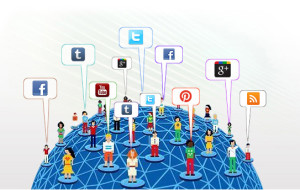We began testing social media monitoring and sentiment-analysis tools about two years ago, when the buzzword was really taking off.
At our annual innovation fair, a couple of our data analysts submitted a prototype using public data collected from Facebook and Twitter.
By filtering to find words like “Lexus,” “decide,” “buy” and “BMW,” they could quickly identify active shoppers who were choosing between ours and another brand. We gave them more funding and bandwidth, and it ultimately evolved into our award-winning sentiment-analysis system.
Today, we use social media data analysis across many areas–sales, service, quality, marketing and product development. For example, if a customer expresses interest in a car, we can determine engagement by analyzing the frequency of dealership visits via their Foursquare check-ins, understand their dealership experiences, and even understand what features may have sparked their interest in a competitor’s product.
This allows us to stratify leads based on their readiness to buy, moving stronger leads to the top of the list and bumping down someone who turns out to be a 12-year-old configuring a Lexus at home.
By analyzing free-form text, we learn what customers think of specific vehicles, like the new Avalon. In the quality area, we can look for information like whether new-car owners are hearing a slight rattle and pass that on to our quality engineers. We’re also working on using sentiment analysis to increase the accuracy of our sales predictions.
If people are saying positive things about the Camry in Boston, how does that correlate with how many actually sell? By feeding sentiment analysis and predictive analytics into our incentive-modelling tool, we hope to make more informed decisions about how to spend incentive dollars.
We also want to deepen our understanding of customers’ other interests, like what are Camry owners’ favourite TV shows, and what other brands do they like? This would help us be more effective in ad placements and brand tie-ins.
A key difference with our tool is that we can correlate our social media results with our own internal data to look for new insights, like what a wide cross-section of people think of the Camry versus what new Camry owners think. Or if we see a customer expressing concern about an experience with a dealership, we can work with the dealer to offer assistance.
We’re very careful, though, not to cross the line when it comes to privacy. For someone deciding between Lexus and BMW, for instance, we could send discount coupons instead of inserting ourselves into the conversation.
It’s been interesting to see the dialogue between IT and the business mature. It’s a great example of IT not waiting to take orders but pro-actively coming up with strategies that grow the business through innovative use of technology. That really requires an understanding of the culture, where the issues are, and what gaps need to be filled.





